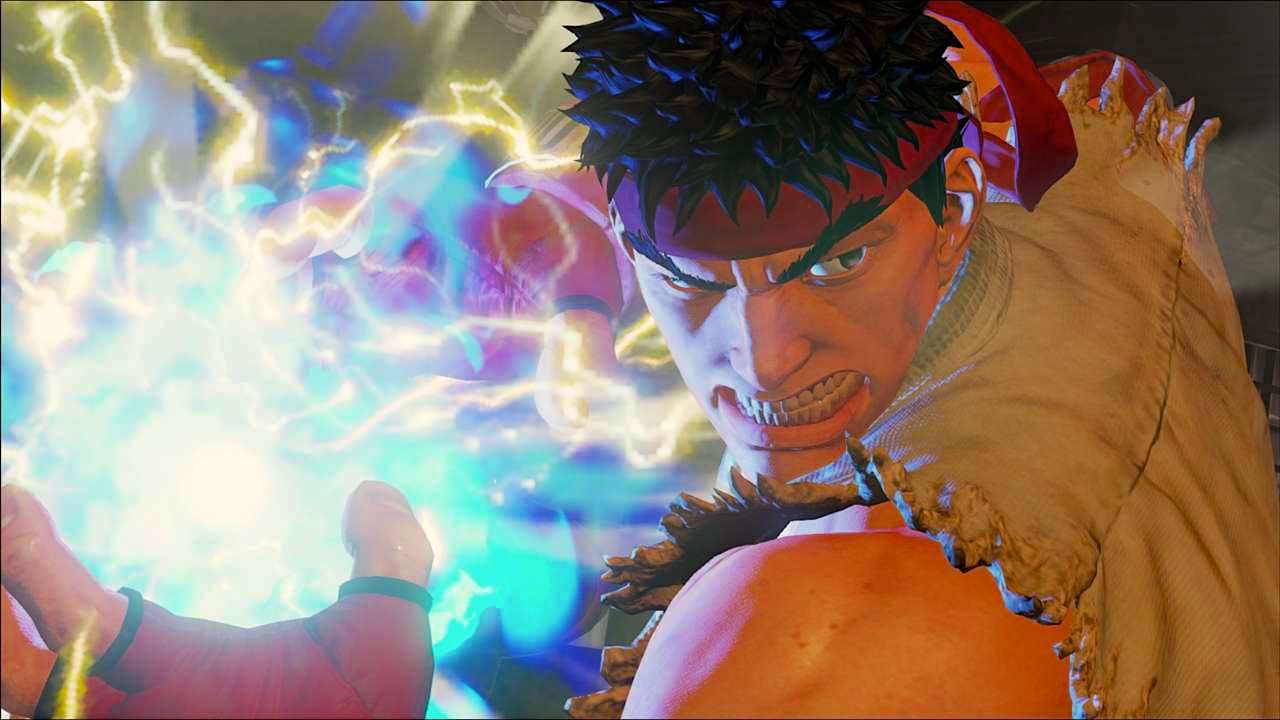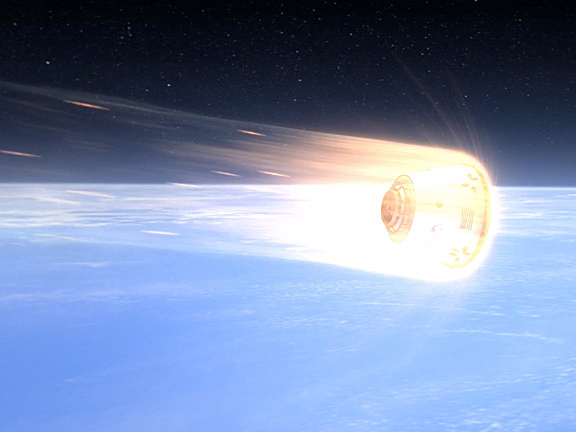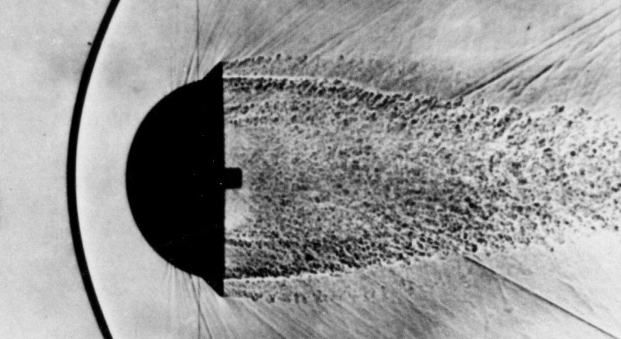The science of Street Fighter: how to (improbably) throw a real life Hadouken
(Sho)Ryu can, but you probably can't

After having solved what scientists are no doubt calling ‘the Mario problem’, TechRadar were keen to get back into the lab and put two months of a failed History of Science masters to good use.
This time we're casting a scientific mind over Street Fighter, explaining how it could exist in the real world using whatever theorems can be found on...er...Wikipedia.
So! Let’s start with a biggie: Ryu’s Hadouken:

While the Hadouken looks like a fireball, it actually draws inspiration from the Dragon Ball anime. The motions Ryu goes through to cast the move are almost identical to Goku’s signature technique, the ‘Kamehameha’. The move goes all the way back to the very first episode of Dragon Ball, back in 1986. Of course, attacks in Dragon Ball are formed of Ki energy. Not the most scientific of answers:

That kind of pseudoscience won’t do here.
More mussels, less muscles
The closest thing to a Hadouken that we can find in the natural world is a punch from the Mantis Shrimp. This little rainbow-colored crustacean is only about 10cm long but it is a marvel of the animal kingdom thanks to its arms. These can come in two varieties, looking like either little spears or little clubs, and they pack a serious punch. Mantis shrimp owners have reported the animal can punch so hard it can crack the glass of the tank it is stored in.
From a standing start its arms can reach a speed of 23m/s, accelerating at 102,000 m/s2. It punches so hard so fast that as well as a hit from its arms, the punch tears the water in its path apart, creating something called cavitation bubbles - that’s when the water has been forced apart, creating little pockets of air. These bubbles immediately collapse under the pressure of the sea and implode, creating a second hit to pummel their targets. The shrimp are able to crack the shells of other crustaceans and stun any aggressors with a hell of a punch.
Sign up for breaking news, reviews, opinion, top tech deals, and more.
The mantis shrimp is able to punch so fast and create this trail of underwater implosions because, as well as muscles along those arms, it has an extra muscle across the elbows that acts like a spring, adding a massive amount of energy in a snapping motion whenever the shrimp punches.
Star fighter
Still, as powerful as this deep-sea thumper is, it still falls short of the effect of a Hadouken. To get the rest of the way we need to look to the stars and throw a little rocket science into the mix.
To us, the Hodoken looks a lot like this:

That is an image of a spacecraft module reentering the Earth’s atmosphere.
On their return to Earth spacecraft travel at around 17,500 mph. Between the upper atmosphere and the ground that speed has to be dramatically reduced to stop the thing from crashing into the ground.
Your first instinct may be to think that the flames are being caused by friction between the air and the spacecraft. If only it were so simple. To get to the bottom of this Hadouken business we’re going to have to go through a little of this history of aerodynamics.
Logical thinking would suggest that you want a near frictionless craft for reentry, one that was sleek so as not to heat up on its way down to Earth. However, back in 1951, two NASA scientists, H. Julian Allen and A. J. Eggers Jr, hit upon the counter-intuitive solution to getting a crew safely back from space to Earth: blunt body physics.
When a needle shaped object falls to earth it has too little drag to slow effectively before reaching Earth, meaning it’d just crash into the ground. The other problem is that the air it rushes through is in direct contact with the craft so the heat transfers directly to the module, causing it to heat up and frazzle the crew inside. But, the blunt body traps air at its base, creating a cushion of air. It’s the cushion of gas under the module that heats up, not the craft itself. So that flaming gas streaking off the side of the craft isn’t transferring its heat to the object itself.
Now, look again at Ryu’s hands when he makes a Hadouken. He’s thrusting forwards with the palms of his hands, creating a blunt body shape and forcing it forwards. Ahead of them his hands are creating a cushion of compressed gas that’s bursting with energy.
But, just how much energy? This wouldn’t seem legit without a few equations, now, would it?
Punching the numbers
According to the Street Fighter fan-created wiki Ryu is 175cm tall. (The wiki lists a surprising amount of personal information, too, like his blood type, O; his likes - grapes, helping people with problems, and pushups; and some of his dislikes - Akuma for murdering his master...)
Using his height we can work out, how much distance Ryu’s hands travel in the generation of a Hadouken:

He draws back quite a way before extending, so he pushes out almost as far as he is tall: 136.4 cm.
So, Ryu’s hands go from nought to cushion of burning gas in just over a metre, but just how fast does that need to be? Well, according to NASA, ships reentering the Earth’s atmosphere are travelling at 17,500mph. So, in half a second, Ryu’s hands go from 0 to 17,500mph. That’s an acceleration of 156,464 m/s2. Not bad for someone whose lifestyle apparently consists of eating grapes and doing pushups.
Acceleration-wise, that’s a full 50,000 m/s2 faster than the mantis shrimp’s punch, but, considering Ryu is 17 times bigger than the average mantis shrimp, it looks like the lad may be pulling his punches.
Now, considering the speeds we’re dealing with here, it’s likely that the damage of a Hadouken has nothing to do with the flames on screen but the shockwave that’s travelling through the air. You’re likely familiar with a sonic boom. When an object travels faster than mach 1, like Concorde or a whip mid lash, then it creates a loud crack. That’s the sound of a sonic boom. Ryu’s palms are moving a tad faster than mach 1 – they’re moving at around mach 25. They’re moving at hypersonic speed. At those speeds they create something called a Bow Shock:

The compressed air would hit you with considerable force.
The easiest way to think about it is in terms of one of these:

The airzooka produces enough of an air blast to feel like a light punch to the face, as demonstrated in the picture above, enough to ruffle a child’s hair.
Of course, we’re dealing with a greater level of force here than what can be mustered from a rubber band and a plastic bag. Happily, the BBC built a much larger, gas-powered vortex cannon to show what can be done if you set your mind to it:
Now, the cushion of air Ryu is forcing out isn’t going to be leaving his hands in the donut-shaped toroidal vortex you get from an airzooka (which is why the cushion of air fired from the toy can maintain so much of its force over such a long distance) but even in the relatively inefficient bow shock wave it will pack a punch due to the short distances of Street Fighter 2’s arenas.
Dragonpunching above his weight
Essentially, Ryu’s Hadouken would hit with the force to blow down a house of uncemented bricks.
So, what we'd suggest is going on in Street Fighter is that, hidden from camera, Ryu has a pair of mantis shrimp-like muscles strung across his elbows that he can employ to snap his arms forward with such force as to accelerate the palms of his hands to 175,000 mph, creating a cushion of air similar to that which we see when a spacecraft reenters the Earth’s atmosphere. The air then leaves his hands travelling to his target, hitting them like a solid punch to the face.
Now, the effect we don’t see is that such a snapping effect on a normal human’s elbows would surely break your humerus, radius, and ulna, as well as destroying any cartilage in your elbows. So, Ryu, would have to have incredibly dense bones to not only keep fighting after throwing a Hadoken but also simply to keep his arms intact.

After looking at the physics of the thing I’d like to suggest another theory for what’s going on in Street Fighter: what we’re actually seeing is a carefully stage-managed equivalent of mixed-martial arts WWE.
We all know that the fights in wrestling are faked, with the fighters pulling their punches and making sure they don’t hit each other with the full force of the kicks and throws. A much more plausible way that Ryu is pulling off a Hadouken is that when he draws back his hands for the move he is slipping the hand that’s hidden from camera into the pocket of his trousers and taking out a cotton wool ball pre-soaked in lighter fluid that he lights with a device hidden in the palm of his hands and throws at his opponent who then fakes a reaction.
Doesn’t it just make more sense that all these incredible attacks are actually all being done by sleight of hand and wire work?
I mean, Blanka can supposedly produce enough electricity from his body for it to jump through the air to shock his opponents. How is he doing that without shocking himself? Zangief’s piledriver sees him launch himself into the air before doing three full-spins before slamming the person back into the floor. Tell me that’s not done with wires and the wilful co-operation of the person he’s throwing. I think in Street Fighter we’ve stumbled across the WWE of the of the fighting game world.
So, it’s up to you: you can believe that Ryu is the child of a mantis shrimp and a NASA reentry module or that he’s as real as Hulk Hogan.
- Welcome to TechRadar's Console Gaming Week, celebrating each and every pixel of video gaming greatness. Head over to our hub for what you've missed so far.

Julian's been writing about video games for more than a decade. In that time, he's always been drawn to the strange intersections between gaming and the real world, like when he interviewed a NASA scientist who had become a Space Pope in EVE Online, or when he traveled to Ukraine to interview game developers involved in the 2014 revolution, or that time he tore his trousers while playing Just Dance with a developer.